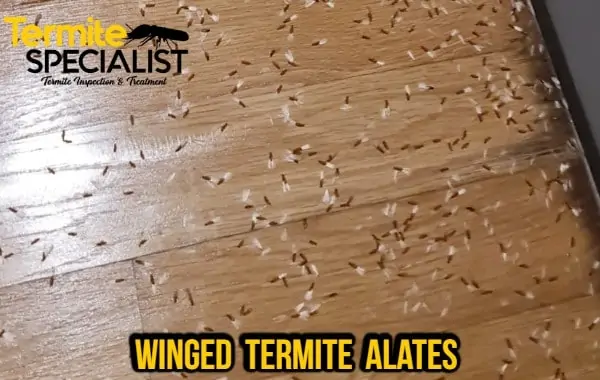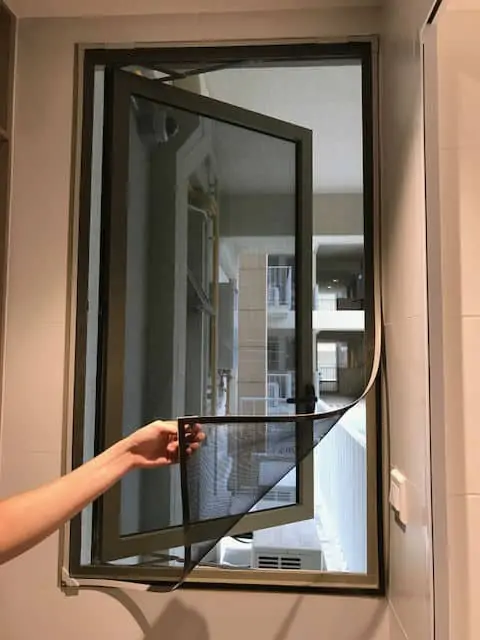Flying Termites in Singapore? Get Rid of Them Fast!
Shocking Truth: Flying Termites Can Destroy Your Home
Flying termites have supposedly been nibbling away at the wood on the earth for at least 100 million years. In Singapore, at least, all the signs indicate that these flying termites don’t look as though they have any intention of moving on from commercial or residential buildings. They love warm and damp areas and are commonly found around fluorescent lights or any light source. With Singapore’s sunshine and warm climate, the city is affected by huge quantities of these subterranean termites, which have wreaked the infrastructure. They love wood and damp areas to lay their eggs. Singapore’s moist, humid temperature provides an ideal breeding ground for a termite infestation on its property.
So, if you have signs in your home getting ready to launch a new colony or termite infestation, you need to get rid of them, as flying insect swarms are a serious warning sign of potential damage for homeowners. Once the queen termite searches for areas to lay eggs, she is capable of laying over 30,000 eggs a day. So, at that rate, you could have a thriving colony of dry wood termites under your house and over two or three years, those with wings will be in your home, causing mass destruction by silently eating away at your property.
With a DIY treatment, you can rid yourself of these termite infestations with a non-toxic spray or call a pest control professional such as. Our Termite Specialist team can give a no-obligation consultation.
If you find insects in your home or multiple termites such as subterranean termites, drywood termites, or around your property, this may indicate an ongoing termite infestation, which can be pretty bad news.
The discovery of winged termites or discarded wings inside a home almost always indicates an infestation warranting treatment. In most cases, ridding a home of termites is a professional job.
What Do Flying Termites Look Like?
To get rid of flying termites swarming around your home, you need to know what they look like, as they look very similar to ants.
Flying or winged termites are the most common termites and are also known as swarmers or alates. Depending on the species, the infestation can range in size from 1/4 to 3/8 of an inch, which is at the reproductive stage of the insect. Also known as alates or reproductive stage termites, flying male and female alates emerge from existing colonies to mate and form new nests and colonies elsewhere.

It differs in appearance from other flying insects, including flying ants with wings, who differ in shape and colour, as flying ants have narrow, or pinched, waists and bent antennae. Swarming carpenter ants, in particular, are most often mistaken for termites.
- They appear in a range of colours depending on the species.
- Generally, flying termites appear in the same beige/tan colour as the other termite castes.
- Flying termites have two antennae which are often straight with a slight curve (whereas ant antennae bend at 90-degree angles) and have four wings that are equal in length and white and translucent in colour with a veiny appearance. Ants, however, have large forewings.
Stop Flying Termites! Identify These 3 Types Today!

Subterranean termites with wings are the most common type of flying termites and like to live in moist places – they make their nests in rotten wood as it’s easier for them to digest. These winged termites tunnel through the wood and make colonies that take about three to six years to mature to the point when the colony produces alates. Winged termites may be the king or queen of a colony – or a swarmer (alate) who then creates a new termite colony.
Drywood termites with wings, however, live in smaller colonies of about 1,000 and live in complete pieces of wood such as furniture, wooden frames, cabinets & wooden floorings. If you see termites in your house, check out your furniture, and any other damage to your home where winged termite activity could be taking place.
Dampwood termites however prefer the damp, moist timber of outdoor areas, such as at parks and gardens where rotting wood and damp wood can be found.
Termites will usually begin swarming in the first quarter of the year when there is plenty of rain and climbing temperatures, and humidity levels begin to rise.
Flying Termites? The Expert Prevention Plan You Need!

Termite Protection
To protect your home from flying termite damage, it is always recommended to conduct regular inspections of your home, examining for termite potential area, water leakage, foundations, wood rot, and wooden frames where termites with wings could breed.
Outside your home, it is always important to check tree stumps, mud tubes, windowsills, and door frames.
Flying termites could be anywhere. If you have swarms of alates outside your house, call Termite Specialist immediately for termite treatment.
DIY Termite Treatment That Works
If you do find a pest infestation, and you’re feeling brave, you may be able to tackle the termites alone. But homemade DIY methods rarely work.
There are many termites and flying ant DIY measures that exist, and include termite bait stations lined with poisonous food, liquid repellents, orange oil which is sprayed on the termite colonies. However, these solutions are not always 100% effective and can end up more costly in the long run & more termite infestation.
So, the best solution to eliminate any pest infestation is to call Termite Specialist who provides effective termite treatment to prevent future episodes of termite infestation.
How to Get Rid of Flying Termites

The most efficient and assured way to get rid of flying termites is to engage professional services such as those who are highly trained and certified technicians who can deal with any termites you might be coming across. We are NEA certified, and we have highly trained experts to provide expert sustainable solutions.
Most effective pest control treatments contain chemicals. It would be best if you had the assistance of a licensed pest specialist who could ensure that pesticides were correctly used in your home for termites with wings. There are a few types of termite prevention, including treatment and pest prevention, including drillings, pumps, or combined treatments that can be used for extensive treatment by termite specialists. Termite infestation but also prevents further infestation from insects.
With experienced termite specialist services, you’ll know that the problem will be completely eradicated and that preventive measures will be taken to ensure that there are no recurring problems. Many of these services offer scheduled maintenance packages, including regular inspection services of your home. With these professionals, their strategically designed methods combine the most advanced technology with a customized plan, which ensures that the pests stay permanently out of your home.
Termite Specialist, Singapore’s number one company for complete, cost-effective termite and pest control, also offers integrated plans that can protect your entire house.
Termite Specialist Pte Ltd protects your properties free from all termites, so don’t hesitate to Contact us for termite inspection or termite treatment. Get Direction to visit us.

